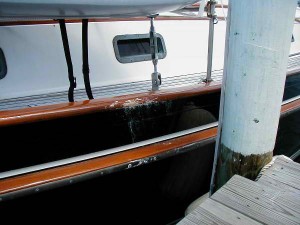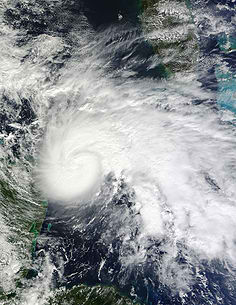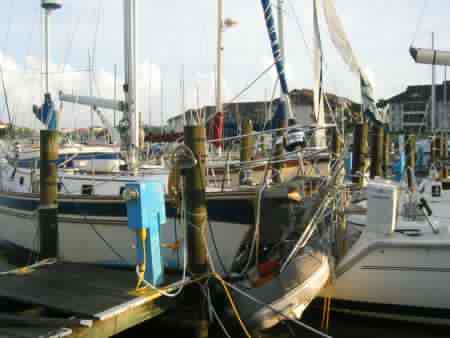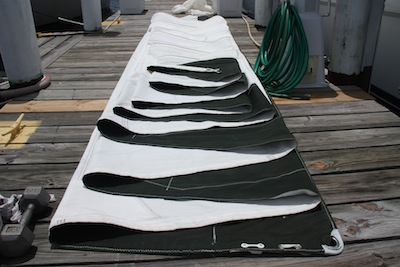I hope everyone was lucky enough to escape major damage from this hurricane but don’t let your guard down! It’s still important to stay prepared.
Here are a few tips for things to check your boat for after the hurricane, assuming you have no major damage.

1. Inspect the boat yourself, do not leave it to your caretaker unless you have no other choice. You know your boat better than anyone so you’ll know if there are things amiss. After Hurricane Charley (a Cat 4 with our marina directly in the path), the entire area was locked down and outsiders were not allowed in for several days. We were able to make it in shortly thereafter and inspect Winterlude. We found minor scratches on the awlgrip hull, some teak caprail that needed replaced on the side where the boat leaned against the piling and miscellaneous other small stuff that needed attention.
Even if your boat seems undamaged at first glance, wind driven water, waves, torrential rains as well as salt spray, may have infiltrated your electrical wiring and systems. Do not use anything before checking everything for water in places it shouldn’t be!
2. As soon as you know it is safe (and the electricity is back on), reconnect the shore power and make sure your charging system is working correctly. You’ll want to make sure the batteries have water, if you have wet cells.
3. Do a thorough interior inspection to make sure none of the hatches, portholes, windows, companionway or other openings leaked or are leaking. The force of the wind and intensity of the rain can easily create leaks where none existed before. In addition, after being banged around, hatches and portholes might break previously water tight seals.
4. Double check all your electronic equipment to make sure a stray lightning strike didn’t cause unseen damage.

5. Check the bilge and insure the bilge pump is functioning properly and there’s nothing in there to cause the float switch to stick and cause the bilge pump to burn out inadvertently.
6. Check all your lines for chafe and replace any lines that have been damaged. Don’t take the extra dock lines off just yet! You may want to reconfigure your spiderweb of lines based on the experience you just gained! If you need more lines, longer lines or stronger lines, add them now. If your spiderweb didn’t allow up and down motion without slack letting your boat bang around in the slip, consider relocating your lines to farther away fastening positions. It seems the longer the line the more it lets the boat ride up and down without losing the ability to keep the boat in the middle of the slip.
7. Check all the chafeguards … you will likely find some shredded, some out of place and no longer doing their job and some just plain missing. Redo all the chafe protection on all the lines. If they didn’t stay in place, use a better system to keep them in place – we use small lines attached very snugly and mostly they stay in place, not always.
8. Check all the bumpers, trash those that are no longer functional — but be careful! We had a Taylor Made large “Big B” fender that deflated and we threw it away. A few years later we found out that some of the Taylor Made fenders have a lifetime warranty – including our “Big B’s”. I have no idea if Taylor Made would have replaced it or if there’s some exclusion for hurricanes.
9. Give the standing rigging a good visual inspection, better yet, climb up and check for chafed stays or halyards, and just make sure everything looks OK. If you’ve gone to the trouble to go up the mast, take a screwdriver or a wrench and check all the screws and bolts (or whatever tools you need to make sure the bolts and screws haven’t worked loose during the storm).
10. While you have the tools out, it’s a good idea to take a tour of the deck and check all the hardware to make sure nothing else has worked it’s way loose and is just waiting for you to use it to implode. Better to tighten everything now!

Obviously, you’ll need to fix any hurricane damage that compromises your boat’s ability to successfully weather the rest of the season.
We’ll all keep our fingers crossed that we have NO MORE HURRICANES! Unfortunately history says we may not be so lucky, so better to be prepared!
What hidden damage did you find after Hurricane Irene? Leave a comment and share so the rest of us can add it to our list to check on! THX! Jan













[…] After the Hurricane — another great list from CommuterCruiser.com with 10 tips for checking your boat after the hurricane passes […]